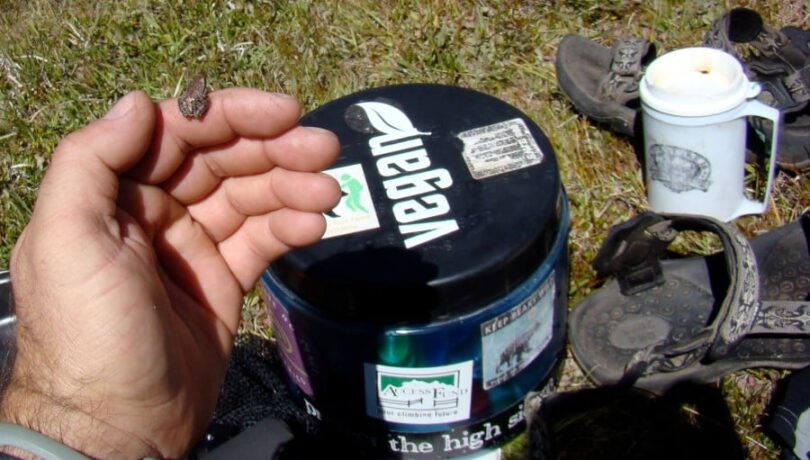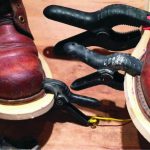You can’t really rely on the safety of food if you keep it in a nylon bag and hang it on a tree all night. If you have never misplaced your food by hanging it on a tree, it’s simply because you are fortunate, regardless of the way you do it.
The idea of hanging food in trees is the customary technique for keeping food safe while camping in the boondocks. The better option is a DIY bear canister—a compact, solid-sided food locker.
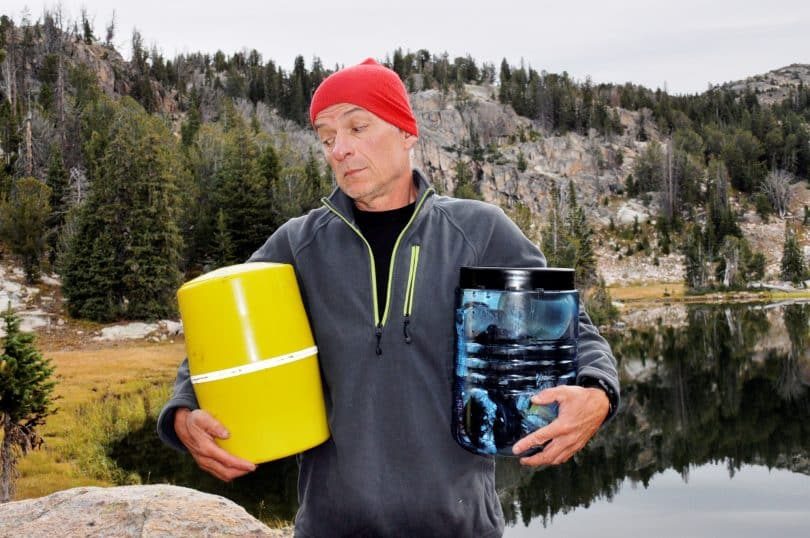
Its main intention is to make food and some other scented items like trash and toiletries thoroughly secure against bears, rodents, raccoons and different critters that are intensely pulled into human food. Read on to have a clear insight about bear canister.
The Definition of Bear Canister and their Importance
Bear canister is known as a bear-proof container often used to store all kinds of food and scenting, bear-attracting things in your bag. Generally, homemade bear canisters are produced using sturdy plastic, although some lightweight and a great deal costlier carbon fiber models are additionally accessible. They are stiff, massive, heavy, and always detested by hikers.
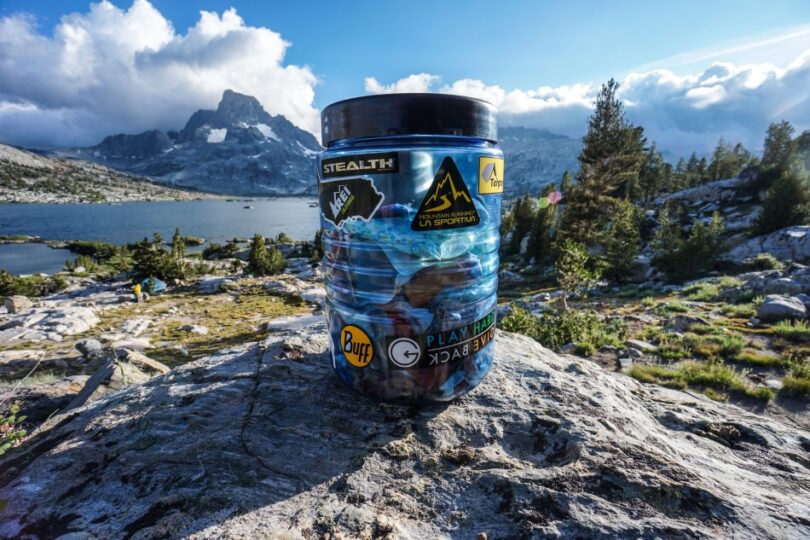
However, bear canisters are additionally compulsory in numerous ranges, thus in lieu of gambling a substantive fine and placing bears at risk of being put down, hikers persevere through the disturbance of bear canisters in their backpacks.
Bears have the capacity to sniff out human food with great effectiveness. A hunting dog’s nose is furnished with around 230 million olfactory cells. That is 40 times that of human’s own. It is assessed that a bear’s nose is similarly as touchy as a hound. In camping’s early days, campers usually sleep beside their food.
Bears, in the end, developed sufficiently striking to approach campgrounds and take those backpacks while likewise frightening the living hell out of campers. Folks tried hanging food bags high over tree branches, binds off the rope to the trunks. Bears made sense of that, as well, snapping the line by using their claws.
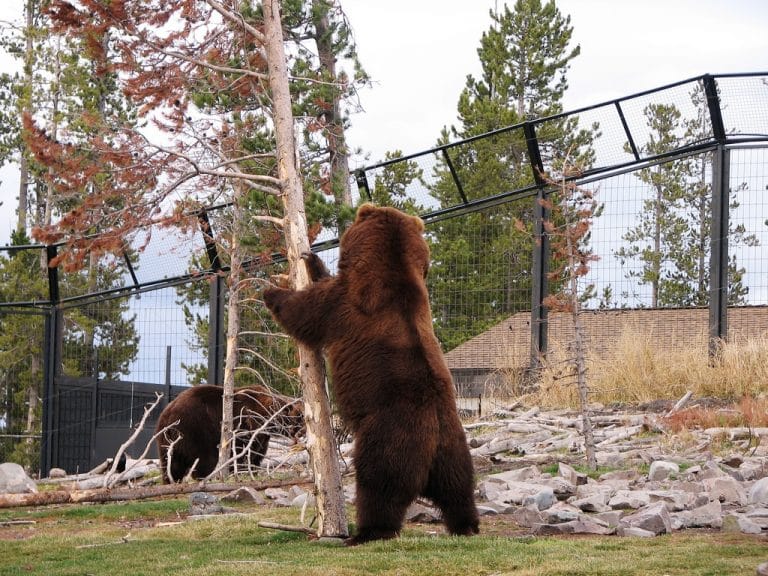
The counterbalance technique came into existence in the 1970s: two bags of nearly similar weight and mass entwined and hanged on a tree branch at least 20 feet off the ground no less than 10 feet from the tree trunk. It is a tedious undertaking that is once in a while easy.
How would you recover it? Tie a circle on one pack, and utilize a long stick to hitch it and draw both packs down. Some folks entwine a long strand of angling line to one sack; angling line dangles imperceptibly to the ground and enables a man to spin in the stash with the use of the hand.
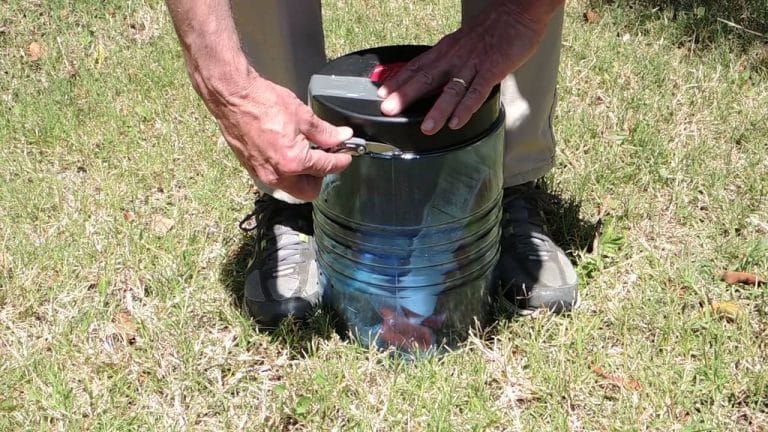
Where allowed, counterbalancing is the food stockpiling strategy of the decision if no other choice is accessible. Bears—savvy, clever and, with regards to human food, persistent—have discovered approaches to overcome even a brilliant counterbalance. Grown-ups, for instance, will convey fledglings on thin appendages to bite the rope or snap the tree branch.
Making a Homemade Bear Canister
If you decide to make a bear canister yourself instead of buying one, this segment is for you. The Bear canister available on the market has a price range of 50 to 80 bucks for a decent sized one. These bear canisters are typically made to have the capacity to withstand the devastating blow of a bear. They are designed to be swung from a rope around 30-40 feet up in a tree.
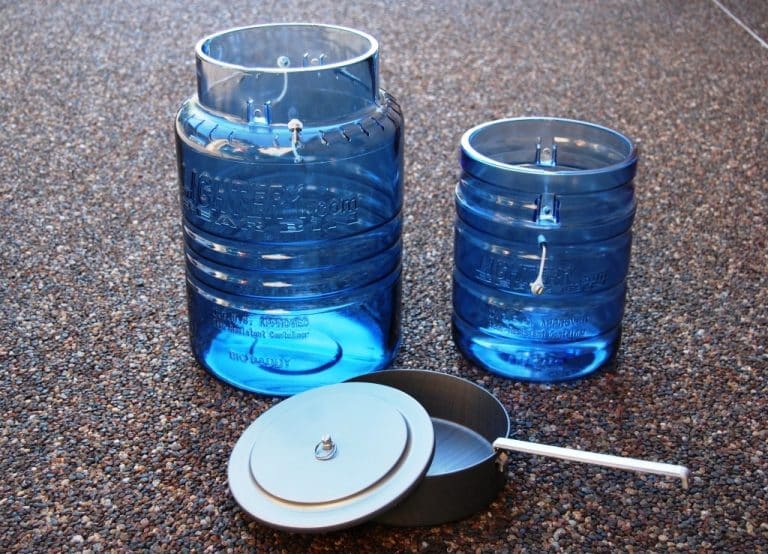
This feature keeps bears away from getting their paws near your food for any occasion. You can make a good homemade bear canister for less than ten dollars.
Step 1
Before you begin anything, the first approach is to assemble the materials and tools required for the making process. The materials that will be needed for the processes are the following: One leak-tight construction container with one leak tight curve on top, 2 key chain rings, 2 bicycle inward tubes or straps,1 tube of 100 percent silicone washroom calk, 1 vinyl slice or hand pulled message to bypass bears and 50 or more feet of light rope.
Most Home Depot will have every one of the materials required for this making process aside from internal tubes. Don’t hesitate to utilize something else instead of internal tubes for the straps or converse with a neighborhood bicycle shop to get damaged or used tubes. The main gears you will require are one knife or razor blade, one calk weapon and a hammer.
Step 2
The next step is to apply the silicone calk to the top edge of the pail. This is to assist in securing the edge to the leak tight curve on top. This will likewise help in keeping the canister impermeable to secure scents. The edge top will be forever connected to the pail after it is used without the silicone, making it be a bit overkill.
![]()
When you have placed a little bead on the edge of the pail, put the leak tight chain ring on the head of the pail without smirching the silicon off of the edge. After the ring is set up, press down the ring to cinch it on the edge. Begin in just a spot on the chain ring and press down on the two focal points to apply attachment to the pail. If this does not work, try to use a mallet.
Step 3
After applying the ring to the pail, the time has come to create straps that will enable it to be fastened to a backpack. These can be produced using any material. You can make use of bicycle inward tubes. Slice the valve away from both tube and then connect the key rings to the little openings that the knob mounts in on the pail. This enables you to have a spot to twist the end of the inward tube to make a strap to attach to a hiking backpack.
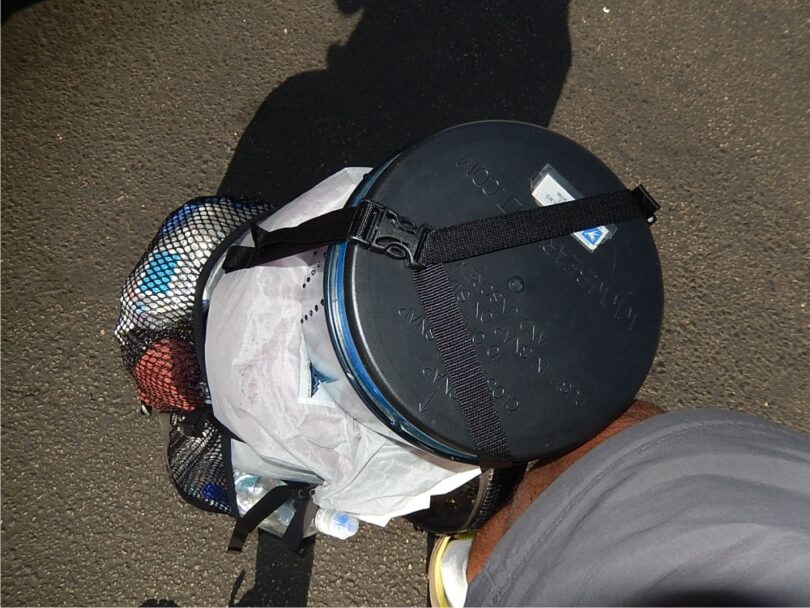
The next thing is to cut two openings in every side of the internal tube to make a circle for a cross strap so as to thread through the other inward tube. Attach the ends once after you have already finish threading it through the other inward tube.
Step 4
Now the homemade bear canister is developed but to really shield your food from bears, you need to consider this final step. This step can be done either by removing a decal utilizing the vinyl cutter or just indicating it by hand using a marker, compose something that obviously designates “BEARS KEEP OUT”.
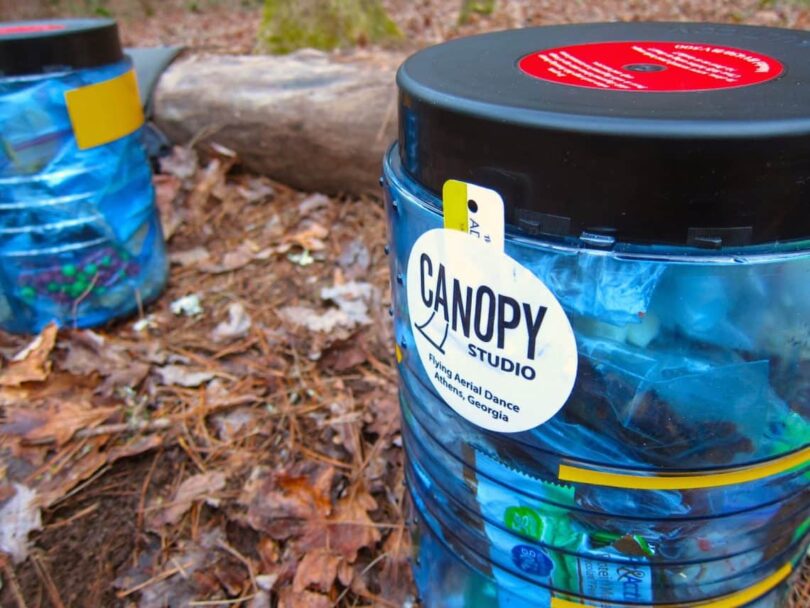
By doing this is the only solution for the bears to really know that your food items are not for them. You can now sling this great canister up in a tree. By utilizing the 50ft of rope, you can hang the newly built canister from the handgrip around thirty feet up and four feet from the tree trunk.
Homemade Bear Canister Basics
Before going into the more technical strategies for managing bear canisters, it is most likely the best to explore the basics.
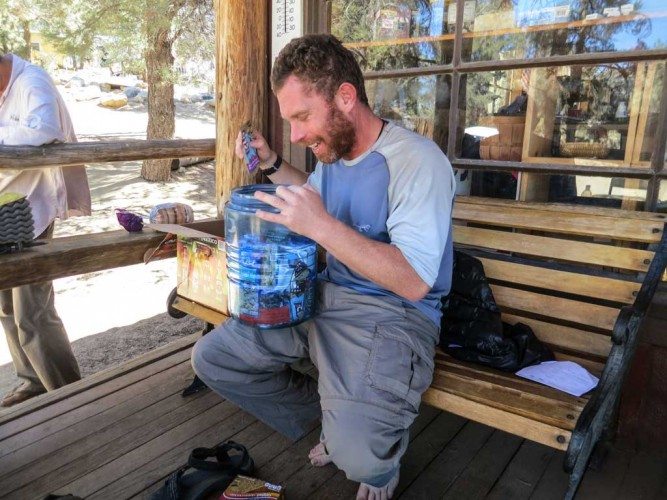
Regardless of the possibility that you have utilized a bear canister before and you are pretty much familiar with bear canister decorum, it would not hurt to explore this information and ensure that you are doing all that you can to guarantee a comfortable and bear-free period.
- Bear canisters are not just for food. Simply anything that goes on your skin such as sunscreen, cleanser, medication, repellant and so on presumably has a place in your bear canister.
- Store your canister no less than 100 ft or 30 m from your campground.
- In case you are entering someplace that a bear canister is required and asking, “Do I actually need one?” Yes, you really require one.
- Close and bolt your bear canister
- Try not to put your bear canister closer to ledges, cliffs, water sources, or anyplace that a bear might have the capacity to thump it off or into.
- Try not to append anything to your canister such as ropes, shoe laces, carabiners and so forth that would enable a bear to steal it away by using its teeth.
- Your bear canister shouldn’t be utilized as a buoyancy gadget particularly not when endeavoring to get away from an engaged bear.
Bear Canisters Tips
Here you can find several basic tips about packing, utilizing and keeping a bear canisters.
Packing a Bear-proof Canister
- All scented things: Food, garbage and toiletries must fit in the canister anytime you abandon it, all through the whole outing.
- Choose your food astutely: Heavy, high-calorie choices are ideal.
- Plan every feast: Avoid conveying too much or little food.
- Repackage cumbersome boxes and expanded bundling: Put all toiletries and food into re-sealable sacks. Bear safe canister with food packs.
- Ensure that everything fits: Before setting out on your outing, ensure that all your food, toiletries, trash and scented things will fit into the bear canister on the first evening.
- Convey the first day’s sustenance outside of the canister: The food must stay with you at all circumstances since it is not kept in a canister.
- Reduce toiletries: All bug spray, toothpaste, sunscreen, and so forth need to be put into the little reusable canister

Utilizing a Bear Resistant Canister
- Make sure that the canister cover is protected. Bear Resistant Canister joined to a pack
- Convey the canister in the rucksack or whip it to the outside part.
- Nylon conveying cases are accessible for a few canisters.
- Place mirror tape on the canister to help with finding the canister during the dark period
- Inscribe your name and contact data on the canister if it got lost.
Keeping a Bear Resistant Canister
- Bear-proof canister is kept on the ground.
- Keep the canister no less than 100 feet from the camp field and 100 feet from the cooking zone.
- Keep the canister on the plain ground in a territory where it won’t be clearly unmistakable to a bear passing by.
- Hanging canisters is not advisable. Bears in this area that can get the canister out of a hanger will have the capacity to carry it by utilizing the rope attached to it. The canister’s shape alone makes it quite hard to convey away.
- Do not keep canisters in the conveying case or connected to your knapsack overnight because bears may take away your bag along with the canister.
- Do not keep canisters in or close to water. Canisters don’t float and are not watertight.
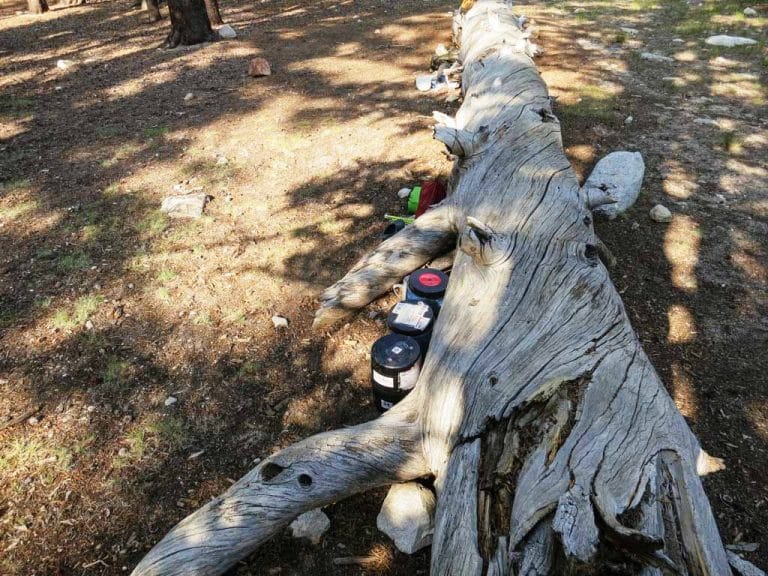
Food Choices for bear canister
In areas where you utilize the bear canisters, it is quite advisable that you should only be conveying refrigerated dried food for warm meals because your plate and cook set may not enter into the canisters. So what you need to do is to utilize the cook-set to warm water and not food.
Moreover, the refrigerated dried food should be in their dishes so there would be no additional compartment to do a reversal in the canister.
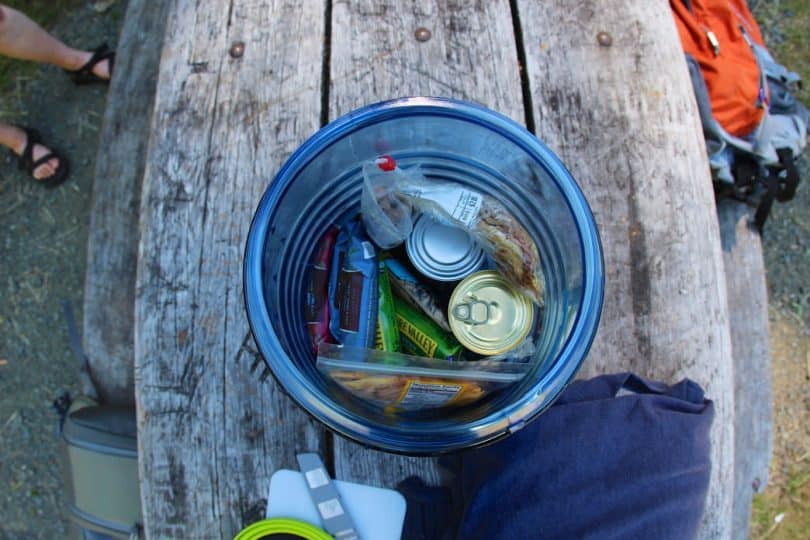
From what have been discussed so far about needing to put all the scenting items into a bear canister, it kind of bodes well that cooking and eating gear and perhaps fuel are needed to be inside a canister. However, it really appears to appear like you would actually require more canister room and a specially built cook-set to go inside.
Do you restrain yourself to just warming water in the cook-set? Do you just eat out of dispensable containers? If not in bear canister do you simply abandon the washed cook-set and consuming container in the same territory as the canister, or the place you cook or straight back to the resting area?
All in All
We hope that you found this post useful. The canister can effortlessly be finished in thirty minutes, not taking into consideration the painting and embellishing.

Despite the fact that it is smaller compared to the commercially produced bear canisters, it will surely hold an astounding amount of hamburger jerky, cocoa powder, oatmeal for your northerner and granola bars.


